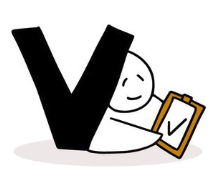Healthcare is going digital
Exploring the potential of digital healthcare in Australia to solve current challenges and identify future opportunities for growth
Industry
Healthcare Pharmaceutical
Duration
8 weeks
Deliverables
7x insights
4x opportunity areas
Final report
Impact
Explored and identified opportunities for new products and services in digital healthcare
Tested how a digital healthcare device readily available in the UK might work in an Australian context, significantly changing the roll-out approach
WHAT was the problem
Emerging opportunities to improve patient outcomes and drive growth
Imagine that with one medicine you could positively support people living with type 2 diabetes, heart failure and chronic kidney disease. Now picture a personal device that can detect one of these conditions from the comfort of home. You can also see the digital healthcare market is rapidly expanding, with an increase of 37% in the previous year alone. How do you leverage these opportunities within such a dynamic market, in the most effective way for both business and customer success?
That was how we were introduced to our project partners, a leading biopharmaceutical company. Our job was to assist in exploring this exciting space using design-led research to:
Explore and identify opportunities for the uptake of digital healthcare devices in the Australian market, and
Test how and if a digital healthcare device readily available in the UK might work in an Australian context.
APPROACH we took
Understanding the domain from multiple perspectives
To fully understand the environment we needed to investigate it through three primary lenses: patients; general practitioners (GPs), and the emerging technology. By exploring these together we knew we could gain a deep understanding of the human context and its intersection with technological advancement, and as a result, would be able to identify opportunities to pursue into the future.
Collaboratively exploring business and tech
To rapidly get up to speed on the technology and business perspectives, we built a hybrid team of WAVE designers, our partner’s staff, and SMEs. This, among other positives, had the added benefit of building close collaboration, easy and agile knowledge sharing, and organic cross-skilling of innovation methods.
Immersing ourselves in the patient context
To understand the patient experience we used an ethnographic research approach. This involved travelling to visit patients in their homes, which allowed us to truly immerse ourselves in the experience of their context and lives. Specifically, we spoke to people with type 2 diabetes and explored their journey from diagnosis to current day. On top of this, we tested the digital healthcare device, to explore how it may be experienced by real Australian users.
Understanding the GP experience
To explore the final part of the puzzle we spoke with GPs. As the primary health contact for most Australian people, we wanted to understand how their day-to-day challenges influenced their ability to select and provide desirable healthcare options. In addition, we wanted to understand whether they saw potential in an ever-increasing supply of digital personal healthcare devices.
Bringing it together to identify the opportunities
To bring all the findings together we shaped our observations into a series of insights, overlaid our partner’s business objectives and strategies, and finally added the Australian digital health market lens. In combining these different views we identified four areas with significant opportunity to drive better outcomes for patients while also driving growth for the organisation.
VALUE we created
A deep understanding of the patient experience and shift in mindset towards opportunities
The approach we took allowed our key project stakeholders to deeply immerse in the research and findings. The CEO of our partner organisation even joined us for one of the research interviews. Our partner came on the journey with us. This level of involvement enabled them to empathise with the lived experience of both patients and GPs, and two significant outcomes were enabled through this. Firstly, the work led not only to the identification of new opportunities to pursue, but also shifted their mindset regarding the spaces where they might play in the future: the adoption of a true innovation mindset.
More specific to our task, our partner walked away from this process with:
A shift in their approach to rolling out the digital healthcare diagnosis tool - guided by a deeper understanding of the needs of patients and the unique primary-healthcare landscape of Australia, being substantially different to the UK.
A widening of the scope of opportunities they would pursue, towards more holistic healthcare solutions, guided by better insight into how healthcare fits into the contexts of patients' lives.
EMPOWERMENT we embedded
Engaging our partners throughout to drive ownership of the outcomes
With the opportunity areas identified in hand it was important to get all of the project stakeholders immersed into the research, so we ran a series of collaborative workshops using the insights and video recordings. Activities were used to unpack, prioritise, and address the emerging opportunities using targeted prompts, with stakeholders required to consider and rank each. As a result, the stakeholders gained clarity and we were able to align as a group on the highest value opportunities areas, this in turn, created buy-in and ownership of the outcomes, and influenced how they would take the work forward.
Project Reflections
This project was a fairly rapid engagement - eight weeks with several distinct user groups to consider as part of the research, and with a broad range of research objects: from very large (what might the future of digital healthcare look like in Australia?), to very specific (does “this device” work for the average Australian user?). With so much to consider it was important we chose our research methods carefully to make best use of the short time we had. In this case I think the results speak for themselves: our client came out the other side of the project with the knowledge they needed to make informed decisions.
I think one of the most interesting insights from this work was that the device we tested failed to meet the needs of Australian users. This was almost entirely due to the nature of the Australian primary-healthcare landscape. We have such great access to pathology facilities that users didn’t see a need to repeat a test at home. This insight actually led to our client choosing not to pursue the roll-out of the digital device. It shows that good research sometimes leads to the extremely valid choice of not doing something. Instead, this frees up time and resources to pursue other opportunities (of which, there were many identified). All in all, a great and highly interesting project and I look forward to working with the client again soon.
- Thomas | Service Design Lead, WAVE
Tom Kerr has led high-profile projects that relied on human-centred design methodology to uncover opportunities and solve complex challenges for governments and large organisations. The work done by teams led by Tom has been presented to global decision makers and changed the way government departments work.For Tom, stories are everything — understanding stories and their context gives you everything you need to design the tools that make things better.
Get in touch
If you need a proven methodology to identify and solve problems, creating a culture of innovation along the way, we are here to help. We’d love to talk more about what you need and how we’ve helped in similar situations.








